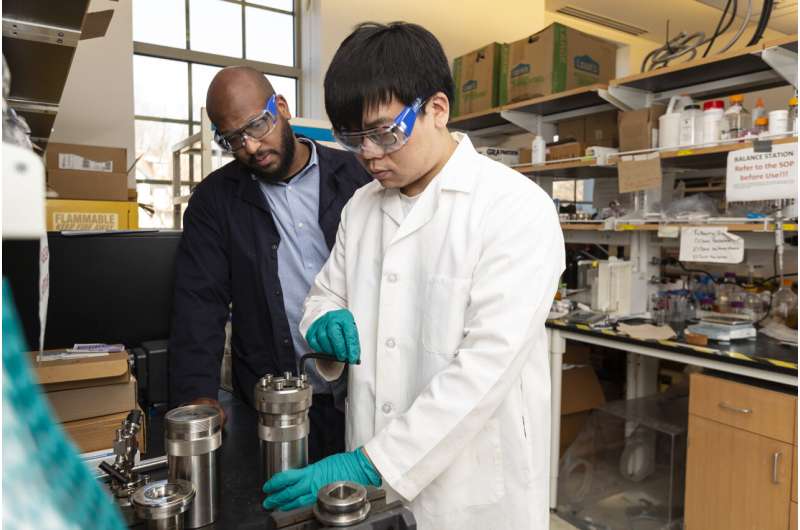This article has been reviewed according to Science X's editorial process and policies. Editors have highlighted the following attributes while ensuring the content's credibility:
fact-checked
peer-reviewed publication
trusted source
proofread
Transforming wood waste for sustainable manufacturing

Lignin, a complex organic polymer, is one of the main components of wood, providing structural support and rigidity to make trees strong enough to withstand the elements. When transforming wood into paper, lignin is a key ingredient that must be removed, and it often becomes waste.
Marcus Foston, associate professor of energy, environmental & chemical engineering in the McKelvey School of Engineering at Washington University in St. Louis, is exploring how to add value to lignin by breaking it down into small molecules that are structurally similar to oxygenated hydrocarbons. These renewable chemicals are key components in many industrial processes and products, but they are traditionally sourced from non-renewable petroleum.
Foston's study of lignin disassembly, done in collaboration with Sai Venkatesh Pingali, a neutron scattering scientist at Oak Ridge National Laboratory (ORNL), was published Jan. 17 in ACS Sustainable Chemistry & Engineering.
"Lignin's structure actually looks a lot like what we get from petroleum," said Foston, who is also the director of WashU's Synthetic Biology Manufacturing of Advanced Materials Research Center (SMARC). "In current manufacturing processes, we spend time making petroleum look like the elements of lignin. Instead, I'm using a catalyst to break lignin down more easily and in such a way that it produces specific chemicals. Once we can produce chemical from lignin in a form we want, then we can make more efficient use of lignin, which is an abundant byproduct of pulping wood into paper."
With collaborators at ORNL, Foston used neutron scattering to study how lignin interacts with solvents and catalysts during its disassembly under reaction conditions, including high temperature and pressure. ORNL's advanced facilities allowed researchers to observe the reaction process in real time to improve their catalyst and further streamline reaction systems for lignin depolymerization.
This direct, molecular-level view is critical, Foston said, to figure out how the catalyst and lignin behave in solution and to ensure the lignin doesn't recondense into a polymer with bonds scientists can't easily break.
"In this study, we're specifically thinking about how we can take the large amount of lignin that gets produced during biofuel or paper production and use it to make renewable chemicals that replace some of the chemicals we currently get from petroleum," Foston said.
"More broadly, the same depolymerization principles we're exploring with lignin could be used in other applications. For example, the same lessons from this study apply to plastic waste scenarios, where one approach is to deconstruct plastic waste into small molecules that could be used to make plastic or other useful products."
"Ultimately, we want to take a bunch of chemicals that are coming from petroleum and figure out how we can make those renewably," Foston added. "Everything we're learning about lignin will apply to other spaces as well."
More information: Jialiang Zhang et al, Structural Evolution of Lignin Using In Situ Small-Angle Neutron Scattering during Catalytic Disassembly, ACS Sustainable Chemistry & Engineering (2024). DOI: 10.1021/acssuschemeng.3c06368
Journal information: ACS Sustainable Chemistry & Engineering
Provided by Washington University in St. Louis





















